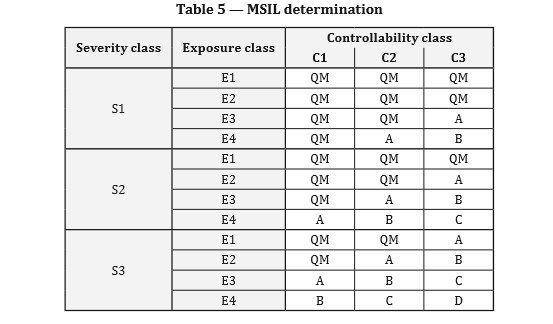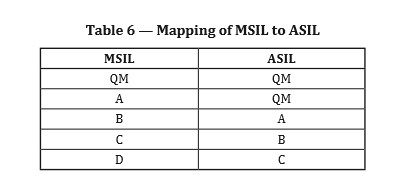The 2020 Internet of Things (IoT) Trends that will Disrupt Industry 4.0
Category : Embedded Blog
The infinite ways in which Internet of Things (IoT) can be applied to industrial processes has disrupted the status quo in this domain.
This has had a very positive impact. Industrial Automation is now able to deliver unprecedented levels of operational efficiency and asset availability.
The true potential of automation in the Industrial Revolution 4.0 era has been unlocked by IoT-enabled systems.
These cloud-connected systems facilitate consolidation of smart monitoring, production integration, predictive maintenance, supply chain management and remote diagnosis into a single data model.
International Data Corporation (IDC) forecasts that the global technology spend on IoT will hit USD 1.2 trillion by the year 2022.
So, let us try to catch up with the 2020 trends of this IoT Universe, which are moving at the speed of light (figuratively).
The Industrial IoT Trends of 2020 that You Should Take Note Of
- Convergence of Industrial IoT and Artificial Intelligence (AI) – Industrial IoT and AI are coming together to further empower the digitisation of production processes.
This has resulted in the increase in efficiency and reduction in overall downtime of production activities, to the levels that were never imagined before.
Challenges faced in the manufacturing sector such as minimising production waste, reducing unexpected downtime and improving the stability of processes have been streamlined through AI-driven Machine Learning (ML) algorithms.
A technology concept named AIoT (Artificial Intelligence of Things) has been conceived to enable connected and intelligent systems that self-correct and heal automatically.
The first generation of this technology is a cloud based IoT framework, which functions in the following manner:
- Collect – A central location logs the telemetry data collected from various sensors and devices.
- Store – The storage of this telemetry data is in scalable systems such as data lakes.
- Process – The telemetry datasets are processed through Big Data platforms.
- Analyse – The information provided by the Big Data systems are used to deliver actionable insights via visualisations.
- Control – The Big Data systems are capable of offering recommendations to field engineers and device operators for controlling the devices.
When industrial IoT was combined with AI in the subsequent generation of this model, the process doesn’t stop at outputs such as visualisations. The ability to act on patterns and correlations from telemetry data can also be developed.
Fundamentally, the facts are not just presented to humans for them to act on. Instead, AI goes a step ahead and takes an intelligent action, mimicking the brain of the connected systems.
AI can also be utilised to analyse the stream of telemetry data in batch or real-time modes. It essentially spreads out from the start to the end of the IoT spectrum.
These AIoT systems will be able to proactively sense events and failures. This can save a huge amount of money on predictive maintenance.
- Introduction of Cobots – Collaborative robots or Cobots, as they are commonly referred to, can improve business growth and ROI tremendously.
Improvement in vision and sensor technology has resulted in Cobots ceasing to be a threat to humans on the shop-floor, due to their quick movements.
The price tag on Cobots has also improved to the extent that these are now viable options for small and medium businesses as well.
Some of the key advantages of using collaborative robots in Manufacturing 4.0 are as follows:
- Effortless Programming – Cobots can be programmed easily, as they are essentially plug and play. Some models can be programmed through a tablet or via adjustments to the arms.
- Quick Setup – Cobots can be setup in a few hours, unlike the industrial robots used previously.
- Flexibility – Collaborative robots do not require too much space and can be redeployed to suit varied applications.
Cobots can be used in the following ways:
- Hand Guiding – A Cobot with hand guiding functionality has a pressure-sensitive device at the end of its arm. Thus, the Cobot can be programmed to grasp an object or move something at a specific speed.
- Safety Monitored Stop – This type of Cobot can work independently as long as there is no human intervention. In case a human must take over, the Cobot automatically senses the presence of the human and freezes its movement until the ground is clear.
- Power and Force Limiting – A Cobot with power and force limiting capabilities can sense objects in its path and stop/reverse movement to prevent a collision. Such Cobots can collaborate and work with humans on a regular basis.
- Speed and Separation Monitoring – This is similar to the safety monitored stop functionality. Instead of stopping when a human enters the safety zone, the Cobot slows down and tracks the motions of the object (human). In case the human is very close to the Cobot, it stops completely.
- Leveraging Augmented Reality (AR) – Augmented reality is one of the emerging trends in IoT in 2020. The believers of Industry 4.0 have been exploring the endless possibilities offered by incorporating AR in an industrial environment.
The software and hardware for AR has consistently seen improvement over the years. Here are some of the possibilities of using AR in manufacturing:
- Assembly – In manufacturing units, it is required to put together thousands of components quickly, with precision. Since work instructions are usually in static documents such as PDFs, it may be hard to work through these. The risk of static documents not being updated in a timely manner is also high.
- AR devices project the instructions in the field of view of the machinist in a voice-controlled and hands-free manner.
- The work instructions are broken down as per the experience of the previous machinist who performed the assembly.
- This information is then uploaded into the AR glasses.
- This helps the machinist in performing the assembly at a faster rate, as he/she does not have to walk over to the station to check static instruction manuals.
- This is particularly useful for complex assembly in industries such as aerospace manufacturing.
- Maintenance – AR can also be utilised for the maintenance of equipment used in the manufacturing industry.
Mitsubishi Electric has developed a technology that uses AR for maintenance support. The user is able to confirm the inspection order on an augmented reality display. They can also enter inspection results using their voice.
This process, as opposed to the traditional method of using a maintenance manual, is more efficient. The AR systems can also be used for maintenance applications beyond manufacturing.
- Expert Support – Machine manufacturers offer after-sales expert support wherein the experts are expected to travel to worksites when there are complications in the functioning of machines. In case of increased instances of such cases, there may not be enough experts to travel on-site.
AR devices have been introduced to provide telepresence in these cases, i.e., the expert can see what the technician sees and point out features that may need further inspection.
This offers experts the flexibility to inspect and support from distant places. This also implies that companies need not invest in training every technician on expert skills.
They can leverage the existing knowledge of experts and deliver it through telepresence. Another use of this technology is the merging of execution with training of less-skilled labour.
- Quality Assurance – The basic idea behind using AR for quality assurance lies in the functionality wherein quality professionals can take photos of vehicle assemblies under inspection. These images can then be compared to the ones from company suppliers through augmented reality overlay.
The features that do not fall in place will be highlighted by the overlay. This way, the issue can be quickly identified and fixed.
- Automation – AR applications enhance the capabilities of the machinist in a very powerful manner. This can be referred to as Augmented Intelligence.
A person with a specific skill level can be strapped with artificial intelligence through AR and IoT. This elevates his/her skill level massively.
More jobs are getting automated these days. By pushing machinists up the skill-chain, they will be more competitive in the market. Eventually, augmented humans and automated machines will be in a cooperative mode in the industry. Hence, AR can leverage automation in the manufacturing sector.
- Assembly – In manufacturing units, it is required to put together thousands of components quickly, with precision. Since work instructions are usually in static documents such as PDFs, it may be hard to work through these. The risk of static documents not being updated in a timely manner is also high.
Summary
Convergence of industrial IoT and AI, introduction of Cobots and usage of augmented reality are some of the significant trends in IoT applications in Industry 4.0.
Statistics associated with the deployment of industrial IoT solutions indicate that early adopters will be able to generate five times more revenue than late adopters.
Companies should ideally focus on narrowing down the business value drivers they are looking to contribute to. This way, they can position their digital strategy with their business goals to utilise IoT platforms efficiently.






















